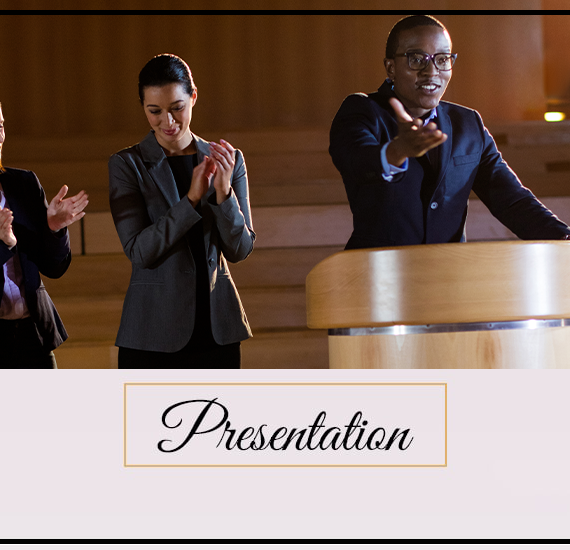The Art of Persuasion: Mastering Aristotle’s Five Elements for Effective Communication

For thousands of years, people have been studying and writing about the art of persuasion. In fact, the Greek philosopher Aristotle laid out his five elements of effective communication in Rhetoric, which are still being used by some of the most compelling presenters today. So let’s dive deep into these five elements and the art of persuasion and how they can be applied in modern-day presentations.
Ethos: Let Your Character Shine Through
The first element, ethos or character, is all about revealing your values, ideals, and beliefs to your audience. This allows them to get to know you better, building trust between you and your listeners. One effective way to show ethos is through personal stories or experiences. By revealing something personal about yourself, you become more relatable and approachable to your audience.
Logos: Make a Logical Argument
The second element, logos or reason, is where you explain your reasoning for your ideas. You aim to convince your audience that your way of thinking is the correct one. One way to achieve this is by presenting well-researched facts accompanied by eye-catching visuals. Blending factual information with innovative design can assist you in presenting a persuasive case.
Pathos: Connect Emotionally with Your Audience
The third element, pathos or emotion, is essential in every successful presentation. Establishing an emotional connection with your audience helps them relate to your ideas on a personal level. Storytelling is an extremely powerful way to evoke emotions, but you can also use captivating imagery, typography, and other design elements to impact your audience’s emotions.
Metaphor: Use Imagery to Visualize Your Ideas
The fourth element, metaphor, helps your audience visualize what you’re talking about. Using metaphors makes it easier for your listeners to understand and remember your message. Having high-quality, relevant images in your presentation is crucial to enhance your metaphors and create a lasting impression.
Brevity: Keep It Simple and Clear
The fifth element, brevity, emphasizes the importance of conveying only essential information to your audience. The human brain can only process so much information at once. Therefore, it’s crucial to stick to your main message, avoid overwhelming your listeners, and use concise language. In addition, well-designed images can help communicate your message more effectively to your audience.
Additional Tips to Boost Your Presentation’s Persuasiveness
Knowing the five elements of persuasion is essential, but there are also additional tactics you can use to enhance your presentation’s impact.
Get to Know Your Audience: Understanding your audience’s interests, needs, and concerns allows you to customize your presentation to their preferences.
Show, Don’t Tell: Visuals have a stronger impact than words alone. So whenever possible, use images to represent your ideas instead of just using text. This helps your audience visualize the future you want them to see.
Use Repetition: Repeating crucial visual elements throughout your presentation helps reinforce your message and enables your audience to remember it better.
Create Exceptional Visuals: Using high-quality, eye-catching images in your presentation is critical. Your visuals should be consistent throughout your slides, and avoid ineffective imagery or design that does not support your message.











Comments are closed.